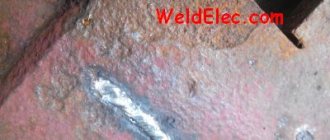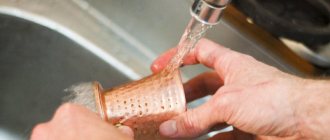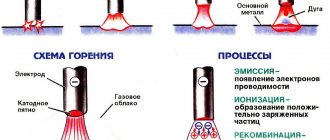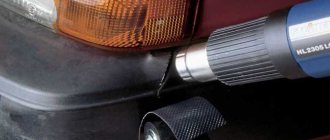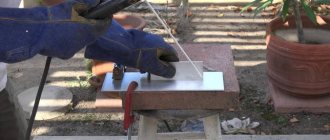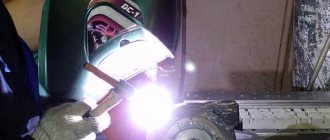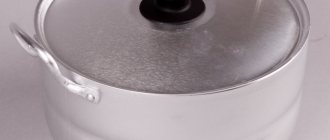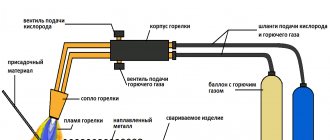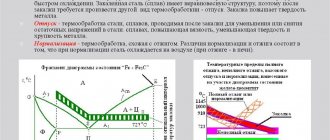What is the difference between UONI 13/55 electrodes and 13/45
UONI electrodes 13/55 and 13/45 are designed for welding critical metal structures with negative sequence direct current. Of the variety of electrodes, UONI electrodes have a number of undeniable advantages, one of which is welding work at low temperatures.
Today there are several brands of UONI electrodes: 13/45, 13/55, 13/65 and 13/85. What exactly is their difference, other than their use in manual arc welding? How do UONI 13/45 electrodes differ from the same electrodes, but only marked 13/55 or 13/65?
Which electrodes to choose
For welding cast iron, special coated electrodes are produced in Russia:
- TsCh-4;
- MNC-2;
- OZCH-2;
- OZCH-3;
- OZCH-4;
- OZCH-6.
Electrodes produced in Russia under license:
- ESAB OK Ni-CI;
- ESAB OK NiCrFe-2;
- ESAB OK Ni-1.
Approximate cost of ESAB electrodes on Yandex.market.
Imported analogues are available. UTP also provides detailed recommendations on the use of its materials:
- UTP GNX-HD - provide a stable arc even at low current, little spatter formation, smooth transfer of the base metal, seams are not prone to the formation of breaks and cracks, and are easily machined. You need to cook on a short arc, without overheating the workpiece. When working with cast iron alloys that are prone to hardening, it is recommended to weld with small beads followed by forging. Welding in vertical and ceiling positions is best done using alternating current;
- UTP 85 FN - used for welding and surfacing of any (except white) grades of cast iron, especially with spherical graphite inclusions (example: VCh 42-12 - VCh 60-2) and for joining these materials with steels and cast workpieces. It has excellent characteristics: an even and smooth arc is maintained during welding, and high speed of work. The result is a beautiful fine-scaled roller;
- UTP 86 FN is a ferro-nickel electrode with a bimetallic core for welding cast iron alloys without heating. Used for joining and surfacing of a number of types (grades) of cast iron: lamellar gray GG 10 - GG 40 (SCh 10 - SCh 40), high-strength (with spherical graphite) GGG 40 - GGG 70 (VCh 42-12 - VC 70-2), malleable GTS 35 - GTS 65, as well as for welding these alloys with other alloys or steels with cast steels;
- UTP 8 – for cold welding. Applicability: gray, malleable, heavy-duty cast irons. Cast steel alloys. Connection with steel, copper and copper alloys. It is best used for working in one pass, applying (or surfacing) a root weld using multi-layer methods. You can also weld cracks on old oiled cast iron parts during restoration and repair work.
A number of welders prefer to use conventional stainless steel electrodes for welding (and surfacing) cast iron, for example:
- EA-400/10U;
- EA-395/9;
- TsL-11;
- TsT-15;
- OZL-6;
- NZh-13;
- NII-48G.
But SSSI 13/55 is also often used. This is the most budget option. Sometimes the rod is pre-wrapped with copper wire.
Approximate cost of UONI 13/55 electrodes on Yandex.market
In each specific case, it is necessary to select electrodes depending on the grade of cast iron. If it is impossible to find out the composition of the alloy, then it is necessary to weld a sample and conduct tests taking into account operating conditions.
Popular manufacturers
Electrodes of varying quality are produced all over the world: from Russia and China to America and Germany. Foreign rods, as a rule, are more expensive than domestic ones, but many welders believe that our products are not as bad as they say.
By purchasing, say, American electrodes, you can be sure of their quality and good performance, but you have to pay twice as much for this. And at the same time, by purchasing Russian electrodes you get a lower price, but at the same time less strict quality control in production. Which country's electrodes are better than others is a long-standing topic of debate.
We will not argue that domestic electrodes are definitely worse; we will give you this choice. We will only tell you about the best electrodes that we were able to try. So, what electrodes do we recommend for purchase? Judging by the reviews and our experience, the best welding electrodes are produced by the brands ESAB, Kobelco, Resanta, UONI and Lincoln Electric. Some manufacturers specialize in the manufacture of electrodes of one type, while others produce rods with both basic and rutile coatings.
Preparing materials for welding
The electrodes must be thoroughly dried. If in production conditions special ovens are used for this, then at home you can leave the electrodes in a regular oven for several (3-4) hours, setting the maximum temperature.
Most often, cast iron is used to make cast parts - elements of cars and machine tools. Bursting elements must be pre-treated:
- Wash off dirt and oil.
- Dry.
- Use a grinder to cut the edges to remove graphite from the surfaces.
- Sharp edges should be dulled with a grinding wheel to prevent stress from occurring during welding.
Before starting, it is recommended to degrease the surfaces with acetone.
Main brands
A welding machine cannot do without electrodes, but the construction world is so diverse and diverse that sometimes the home craftsman is simply lost in what he should choose from the entire list that is offered to him.
But I would like to draw your attention to several brands that are considered the best among all. First of all, these are UONI brand electrodes, which have long proven their quality and the characteristics of which will be discussed a little later.
The second type of electrode is MP3. This brand is very common today. It is most often used to carry out welding work on not the most critical structures.
, which are made of carbon steel, and they can also be low-alloy.
The main advantage of this electrode is that the electric arc burns continuously, and thus there is uniform penetration of the metal being connected
, and therefore such strength of the entire work. To work with this brand, you can use both alternating and direct current.
Another common brand of electrodes is OK 46. They are not only good for the welding process, but also have a coating such as rutile. Therefore, the welding seam is strong and reliable.
, because it even allows you to re-ignite the electric arc itself. But not every welding operation can be performed with this cathode, since it is better suited for, for example, tacking metal or creating a root weld.
Welding process
To connect two cast iron parts, they need to be folded on a workbench or welding table; it is advisable to fix them with clamps, clamps, or special devices to reduce the likelihood of deformation. If you need to weld a crack, it is not necessary to fasten the elements. There are two ways to weld cast iron using a coated electrode and an inverter.
Hot method with preheating
It is difficult to fully comply with welding technology at home due to the need to heat the parts to high temperatures. The principle of the method is described in GOST 30430-96:
- Assembling the product using tacks.
- The elements to be welded are heated to 400-600 degrees.
- Welding is carried out by thoroughly mixing the molten metal . It is important not to interrupt the process before the graphite has burned out in the weld pool. At the end, you need to move the electrode beyond the joint and interrupt the welding on the base metal.
- After this, the part is heated again and allowed to cool slowly..
To control the temperature regime, thermal pencils are used that melt at certain temperatures (marks are placed on cast iron) or portable pyrometers. To allow the product to cool slowly, it is placed in sand.
If you need to weld cast iron at home, you can heat the parts using a gas cutter or torch.
Cold method without heating
The universal method is suitable for use in field conditions - in the garage or at the dacha. But to carry out welding it is necessary to use appropriate electrodes. The essence of the process:
- After preparation, the parts are placed on a workbench and, if necessary, secured.
- You need to make several tacks and let the material cool . Check product dimensions.
- Cook in small sections, avoiding overheating . After cooling, the slag must be removed and treated with a brush until it has a metallic shine.
If defects appear - cracks, fistulas, pores - you need to remove them using a cleaning wheel. Weld again.
Unprepared surface
Let's assume that all the above conditions are met.
But why does the electrode stick to the metal again? Another reason is a dirty, wet or rusty surface of the part. Electrode rods that have a basic type of coating are resistant to dirt and rust, unlike products with rutile and rutile-cellulose coating. During the welding process, oxides and dirt become a barrier between the surface of the part and the electrode. The contact is bad, the arc goes out immediately. A second, third, fourth ignition is required. The result is that the end is stuck again. Therefore, the surface of the part must be cleaned before work if required by the manufacturer’s recommendations.
Dampness
This is another reason why electrodes are not boiled. Welders, and not only them, know that these products have no expiration date. If the materials are packaged and stored in a dry, warm place, they will serve both after 10 and 20 years - of course, provided that they are of high quality. But if the products are located in a room with high humidity and without sealed packaging, dampness and subsequent sticking during welding is inevitable. It's a matter of coating.
The coating, like a sponge, absorbs moisture and thus impairs the welding properties of the electrode. Therefore, even if the rods have been lying unpacked for 8 hours, be sure to dry (calcinate) them.
To store electrodes after opening the package, a thermal pencil case or thermos case is suitable. In the first, heating can be done from a transformer or from a 220V network. In the second, the products are preheated and cooled for a very long time, maintaining the desired temperature.
Recent comments
- admin to the post rating of Crimean cognacs 2021
- Yuri Georgievich on rating of Crimean cognacs 2021
- admin to the entry the better way to wash dishes with a sponge or rag
- Nikita on what is better not to ask Alice
- Olga on the post: Recommend a good fortune teller in Krasnodar
© 2022. Product rating - TOP 10.
All rights reserved. Attention! The information published on the site is for informational purposes only and does not constitute a recommendation for use. The Materials may contain information intended for users over 18 years of age. 18+
No calcination
Electrode products require preliminary calcination before performing work - manufacturers warn about this both on their websites and on the packaging, indicating heat treatment and drying modes for each brand and unit of product. Otherwise, metal sticking during welding is often unavoidable.
Calcination should not be carried out in a flame furnace, as it is impossible to accurately adjust the temperature. It is not recommended to do this in a gas oven (with direct heating) - the gas contains a certain amount of moisture, which the coating absorbs, as a result of which its quality decreases.
The optimal calcination option is an electric furnace. Before performing the operation, you must check the recommended temperature and holding time, which are indicated on the label attached to each package of products. They vary for different types of electrodes - from 180 ᵒС and 1 hour for electrodes with rutile coating and up to 400 ᵒС 1.5–2 hours for electrodes with a basic coating.
